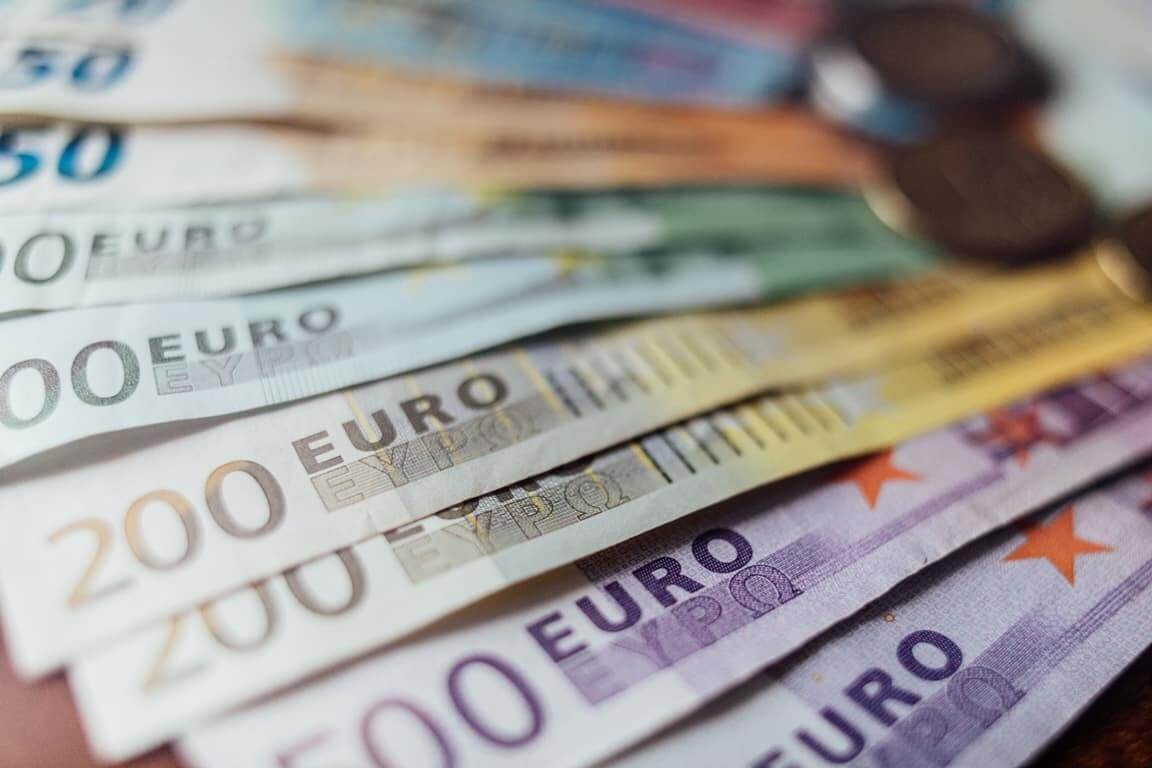
Euro drops from its one-month high. What about the U.S. dollar?
The euro tumbled down from its one-month high on Wednesday. On the other hand, the U.S. dollar edged up, boosted by higher Treasury yields as global inflation concerns flared anew. The dollar index soared by 0.2% to 101.96 against six major peers, including the euro, extending Tuesday’s gains. Yesterday, data showed that eurozone consumer inflation hit a record.
The common currency plummeted by 0.2% against the greenback, continuing to decline from a one-month peak of $1.0787, reached on Monday. However, national inflation readings from the EU indicated a high print for the bloc. The market analyst at Vantage Markets, Jamie Dutta, noted that Belgian, German, and Spanish inflation data set the scene on Monday. As a result, the EUR/USD pair has approached the $1.08 level, rebounding from $1.0348, so it was really a technical pullback.
On Monday, the dollar index plunged to a one-month low of 101.29 after dropping from an almost two-decade high above 105 in mid-May. U.S. inflation and other economic indicators showed signs of the currency hitting high amid the Federal Reserve’s aggressive policy tightening. A two-day rally has seen the index trading back towards 102.00, though.
UniCredit analysts stated that the dollar seems less sluggish than it has been in recent trading sessions, but its recovery attempts remain far from convincing. Forex markets have priced half-point interest rate rises for the agency’s meetings this month and next, in line with what policymakers have been signalling. However, the outlook beyond that is murky. A monthly U.S. jobs report is due on Friday. It may offer some new clues.
How is the safe-haven Yen faring?
The dollar surged forward by 0.5% to 129.345 yen. It had touched 129.54 earlier, its highest level since May 17, as soaring U.S. Treasury yields boosted the pair. UniCredit announced that yield differentials between Japan and the U.S. are still discouraging any tentative attempts to move the pair towards 125.
Meanwhile, benchmark 10-year Treasury yields climbed up 1.8 basis points at 2.8622%, after touching their highest level since May 19 at 2.888% earlier. The spread between Japanese and the U.S. 10-year bond yields also widened to 265 basis points, the most since May 19.
On Wednesday, the greenback changed insignificantly against its Canadian counterpart. The Bank of Canada’s rate-setting meeting is scheduled at 1400 GMT. Traders widely expect a 50-basis-point increase. The Aussie dollar added 0.2% to $0.7185 after data showed Australian GDP jumped by 0.8% in the March quarter from the previous quarter. It topped market forecasts of a 0.5% gain. On the other hand, the Kiwi dollar declined by 0.1% to $0.65065.
The British Pound traded flat against the greenback at $1.2605 after the sterling’s first positive month of the year. A small 0.2% rise of the currency snapped the previous four months of losses.
In Asia, the Chinese yuan dropped for a second day after posting three consecutive months of losses, tracking the broad dollar strength in global markets.
What about the EM currencies?
Emerging Asian currencies traded in the red on Wednesday, hurt by a firm U.S. dollar and surging Treasury yields. Taiwan also underperformed on decreasing economic growth.
Yeap Jun Rong, the market strategist at IG, stated that the new eurozone data would seem to translate into greater pressure for the ECB to tighten rates by a larger 50 basis-point hike in July’s meeting.
The managing partner with SPI Asset Management, Stephen Innes, also added that forex markets are more concerned about the sticky inflation narrative.
Currencies tumbled down in Asia, with Taiwan’s dollar losing the most. It fell as much as 0.8% in its worst session since March 2020. On Tuesday, Taiwan’s central bank flagged declining economic growth and high inflation, causing its stocks to drop by almost 1%.
Moreover, Singapore’s dollar and the Malaysian ringgit plunged by 0.2% each, and the Thai baht decreased by 0.1%. However, the Indian rupee firmed by 0.2%. It was the only gainer among EM currencies. Data showed on Tuesday that the country’s economic growth slowed to the lowest in a year in the first three months of 2022.
The current recovery is unsustainable, owing to tighter monetary policy, higher inflation, and global growth slowdown – noted analysts at Nomura. Oil prices jumped in early Asian trade after European Union leaders agreed to a partial and phased ban on Russian oil. In addition, China ended its coronavirus lockdown in Shanghai.




